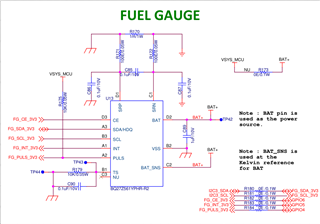Other Parts Discussed in Thread: BQ27Z561, GPCCHEM, BQSTUDIO
Tool/software:
Hi,
I am implementing the learning cycle using the BQ27Z561 fuel gauge IC on an LP353035 LiPo battery (3.7V, 400mAh). I have completed the learning cycle up to step 3 (discharging process), and the update status has progressed to 05. However, it should update to 06 after the discharging process, but it has not. Can you help identify the possible reason for this issue?
The Chem-ID I am using, according to the GPC report, is 1123, and the max DOD % is 2.5. Additionally, the Ra table gets updated after the charging process.


